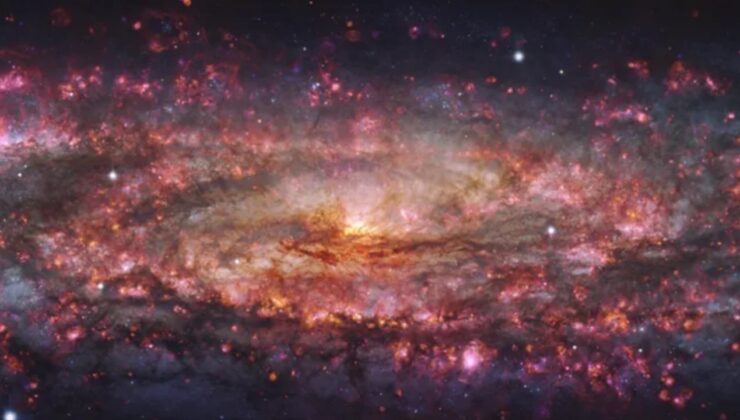Stunning New Galaxy Image Breaks Records as the Clearest Yet
Discovering the Sculptor Galaxy: A Closer Look from Within and Beyond
The Sculptor Galaxy, often compared to our own Milky Way, exhibits many structural similarities, yet it presents unique features that intrigue astronomers worldwide. Being positioned outside our galaxy allows us to observe it in its entirety, providing insights that are impossible from within. For astronomers, this galaxy’s vantage point offers an exceptional opportunity for detailed study, enabling the creation of an incredibly detailed image that spans approximately 65,000 light-years across.

Recent advancements have led to the development of an ultra-high-resolution image of the Sculptor Galaxy, revealing previously unseen features. This achievement was made possible through observations using the Very Large Telescope (VLT) located in Chile, operated by the European Southern Observatory (ESO). The team captured images in thousands of different colors simultaneously, allowing for a comprehensive analysis of the galaxy’s complex internal processes. The vast amount of data collected enabled scientists to craft an image that illustrates the diverse life cycles of stars within the galaxy on a grand scale.
Innovative Imaging Techniques and Scientific Insights
The detailed view obtained from the VLT’s MUSE instrument showcases a panoramic scene of the Sculptor Galaxy, as depicted in the image provided by ESO (source: ESO/E. Congiu et al.). Enrico Congiu, a researcher at ESO, emphasizes the significance of this approach: “Galaxies are extraordinarily intricate systems, and our understanding is still evolving. The Sculptor Galaxy’s proximity makes it an ideal target: close enough to resolve its internal structure, yet large enough for us to observe it holistically,” he explains.
ESO elaborates that the various components of a galaxy—stars, gas, and dust—emit light across different wavelengths and colors. Consequently, a multi-colored image reveals a wealth of information about its internal dynamics. Unlike traditional images limited to a handful of hues, this new map incorporates thousands of distinct colors, providing unprecedented detail about the age, composition, and motion of the galaxy’s constituents.
Creating a Cosmic Map: Methodology and Discoveries
To produce this comprehensive map, scientists dedicated over 50 hours to studying the galaxy using the Multi Unit Spectroscopic Explorer (MUSE). More than 100 individual exposures were combined to encompass the entire structure spanning about 65,000 light-years. This meticulous process has empowered researchers to analyze the galaxy at multiple scales—from the fine details of star-forming regions to the galaxy’s overall architecture.
Kathryn Kreckel of Heidelberg University highlights the versatility of this dataset: “Our detailed map allows us to zoom in on specific regions where stars are actively forming while simultaneously examining the galaxy as a whole,” she notes. An exciting initial finding from this study is the detection of approximately 500 planetary nebulae, which are luminous shells of gas and dust expelled by dying stars. Prof. Adam Leroy from Ohio State University underscores the importance of these nebulae: “Identifying planetary nebulae helps confirm the galaxy’s distance, laying the foundation for further detailed research,”.
Future Directions and Broader Implications
Looking ahead, this detailed map will serve as a vital resource for studying the dynamics of gas flows, variations in chemical composition, and star formation processes throughout the galaxy. The insights gained from such comprehensive observations are expected to significantly advance our understanding of galaxy evolution and the intricate lifecycle of cosmic matter.
 02:00
02:00



